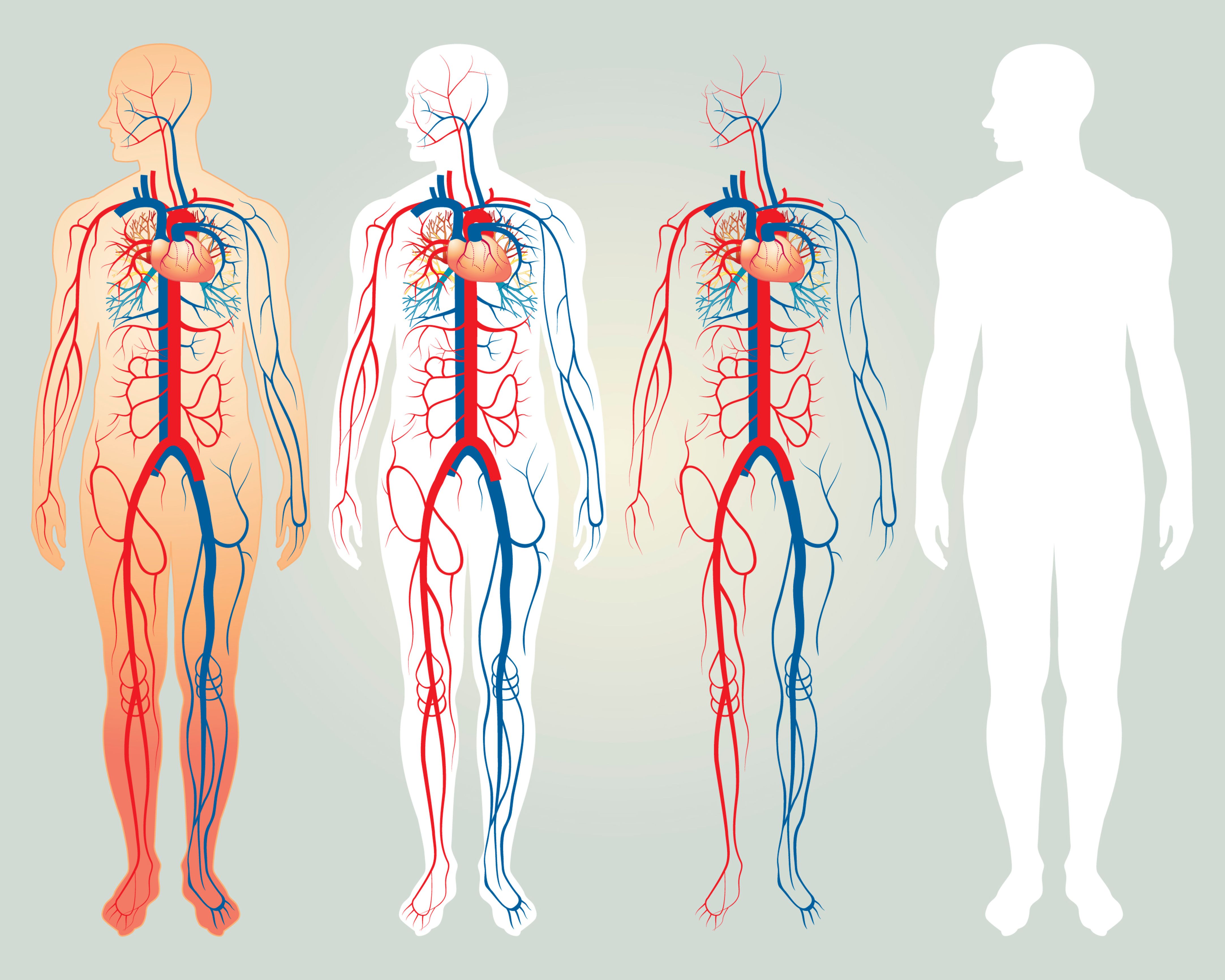Varicose Veins
Signs & Symptoms of Chronic Venous Disease
Prevention of Chronic Venous Disease
1/11/2024
How Does Elevating Legs Improve Circulation?
Elevating the legs is a simple technique that helps to improve circulation and your leg health. Whether you've experienced prolonged sitting, standing, or suffer from specific conditions such as swelling due to venous insufficiency, elevating the legs can offer numerous benefits.1
The Mechanics of Circulation
To understand the effects of leg elevation on circulation, it's important to grasp the basics of the circulatory system. The cardiovascular system consists of the heart, arteries, veins, and capillaries. Arteries carry oxygenated blood away from the heart to the various tissues and organs throughout the body. Veins, on the other hand, transport deoxygenated blood back to the heart. Unlike arteries, veins have the challenging task of carrying blood against gravity, especially in the lower extremities. Valves within the veins prevent the backflow of blood, but extended periods of standing or sitting can weaken these valves, leading to poor circulation, swelling, and discomfort.2

How Leg Elevation Helps:
Elevating the legs involves raising the legs above the level of the heart. This position harnesses the power of gravity to facilitate venous return, allowing blood to flow more efficiently from the lower extremities back to the heart. The benefits of leg elevation include:
- Enhanced Venous Return: Elevating the legs reduces the hydrostatic pressure in the veins, relieving stress on the valves. This facilitates the return of blood to the heart, promoting healthy circulation.
- Reduced Edema and Swelling: Leg elevation helps to alleviate fluid retention and swelling in the ankles, feet, and legs. By reducing fluid accumulation, it relieves discomfort and contributes to a more balanced fluid balance.
- Improved Lymphatic Drainage: The lymphatic system, responsible for removing waste products and toxins from the body, works closely with the circulatory system. Elevating the legs assists in lymphatic drainage, aiding in the elimination of toxins and reducing inflammation.
- Relieve of Leg Fatigue and Discomfort: Prolonged sitting or standing can lead to leg fatigue and discomfort. By elevating the legs, blood flow is optimized, providing relief from these symptoms and promoting a sense of relaxation.
- Prevention of Venous Disorders: Regular leg elevation can play a preventive role in venous disorders such as varicose veins. By improving circulation and reducing pressure on the veins, leg elevation minimizes the risk of these conditions.

Best Practices for Leg Elevation:
To maximize the benefits of leg elevation, it is essential to follow these best practices:
- Elevate Above Heart Level: For optimal results, elevate your legs above the level of your heart. Utilize pillows or a recliner to achieve the desired height.
- Maintain Consistency: Incorporate leg elevation into your daily routine. Aim for regular intervals of elevating your legs for 15-30 minutes, multiple times a day.
- Combine with Movement: Leg elevation should not replace regular physical activity. Pair leg elevation with moderate exercise, such as walking or stretching, to further enhance circulation.
- Seek Medical Advice: If you have a pre-existing medical condition, such as cardiovascular diseases or diabetes, consult your doctor before incorporating leg elevation into your routine.
To conclude, elevating the legs is a simple yet powerful technique that improves circulation, reduces swelling, and promotes overall well-being of your legs.
If you're experiencing persistent or worsening symptoms of heavy legs, it's essential to consult your doctor. Only they can offer valuable advice on treatments, such as venoactive drugs, to help reduce the manifestations of Chronic Venous Disease (CVD).
REFERENCES
-
health.ucdavis.edu. (n.d.). Chronic Venous Insufficiency | Vascular Center | UC Davis Health. [online] Available at: https://health.ucdavis.edu/vascular/diseases/cvi.html#:~:text=Treatment%20for%20chronic%20venous%20insufficiency&text=Elevation%3A%20Elevating%20the%20legs%20can
-
Mayo Clinic. (2021, August 26). Varicose Veins. Retrieved from https://www.mayoclinic.org/diseases-conditions/varicose-veins/symptoms-causes/syc-20350643
2026